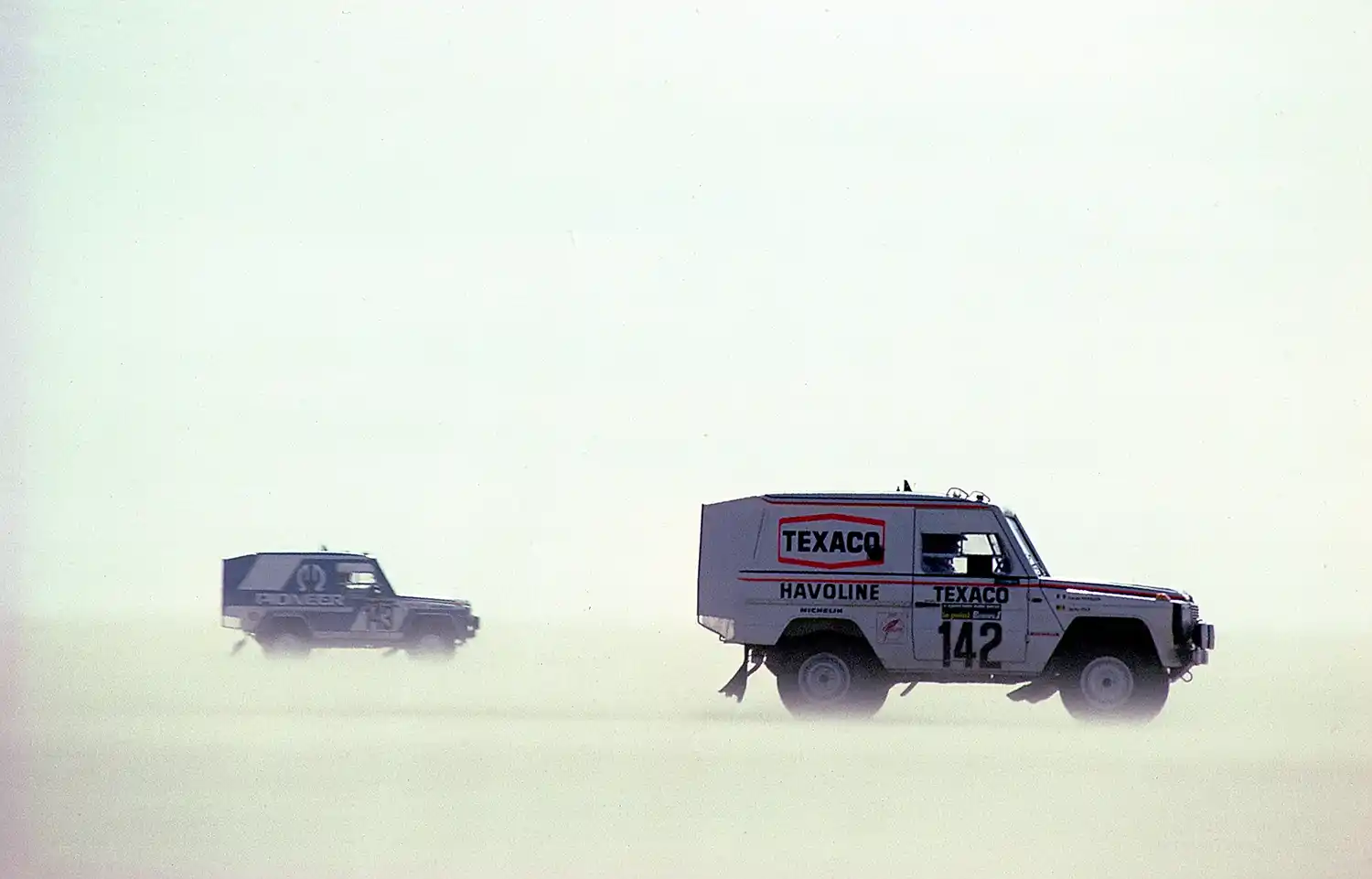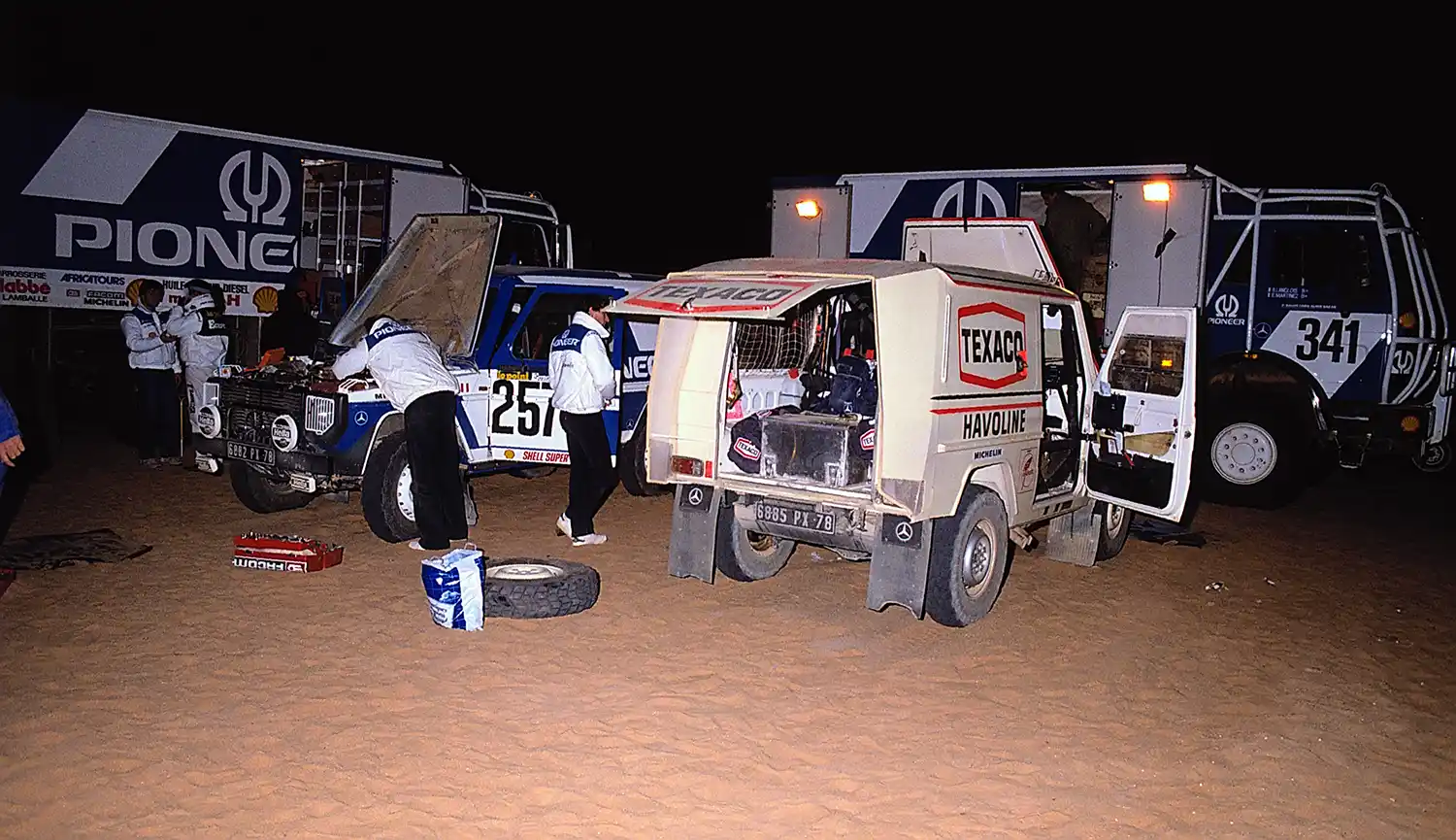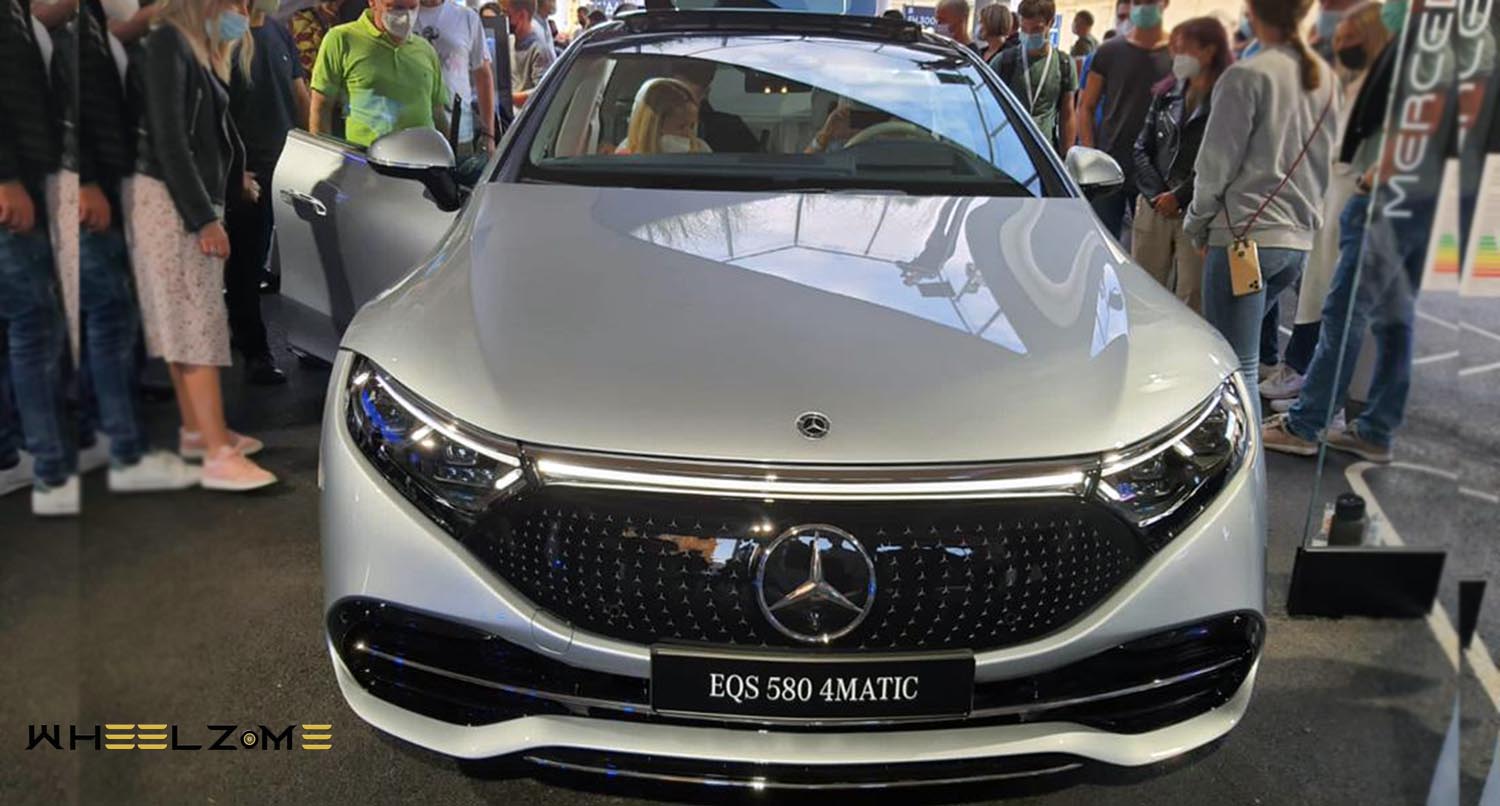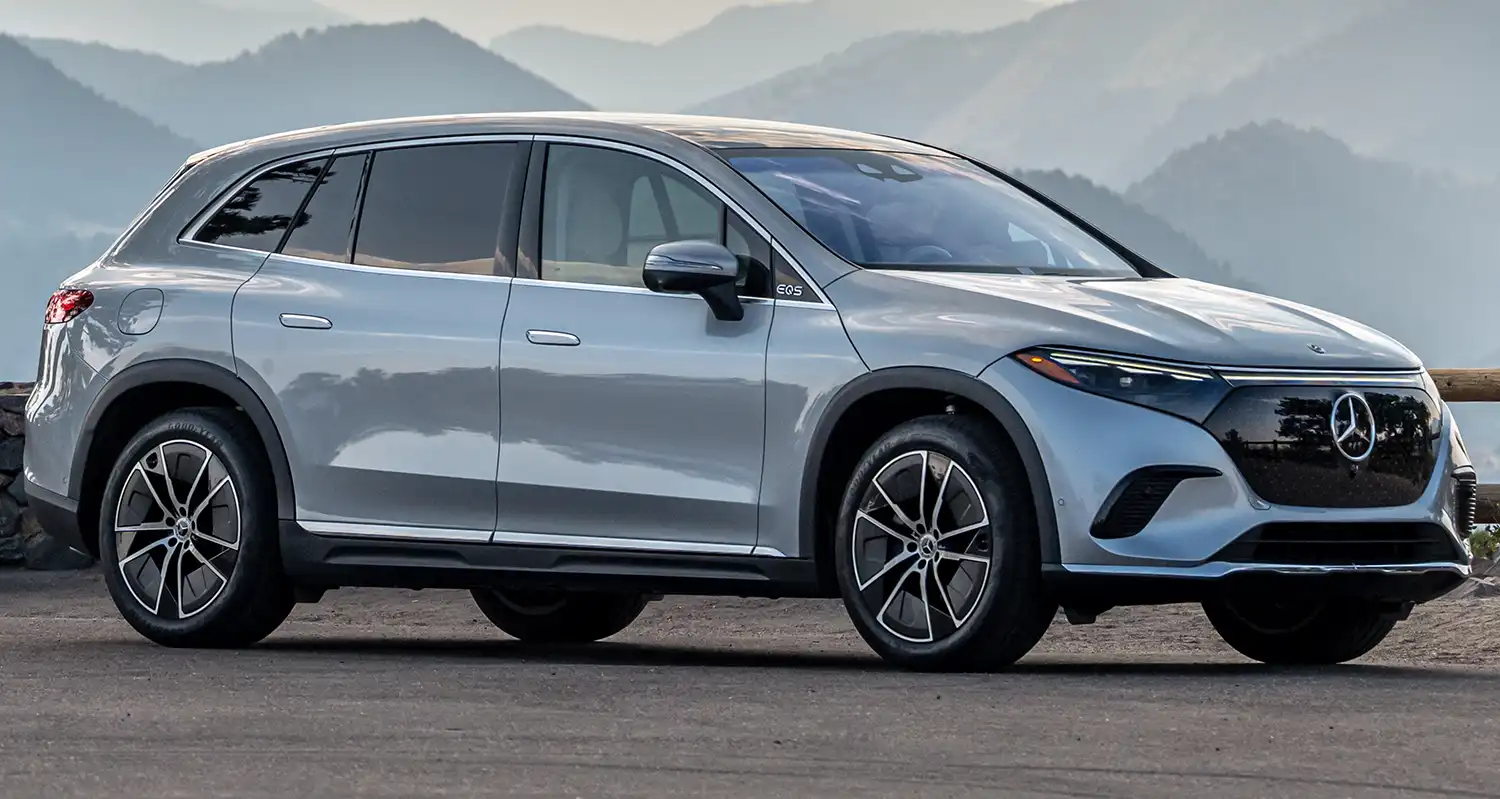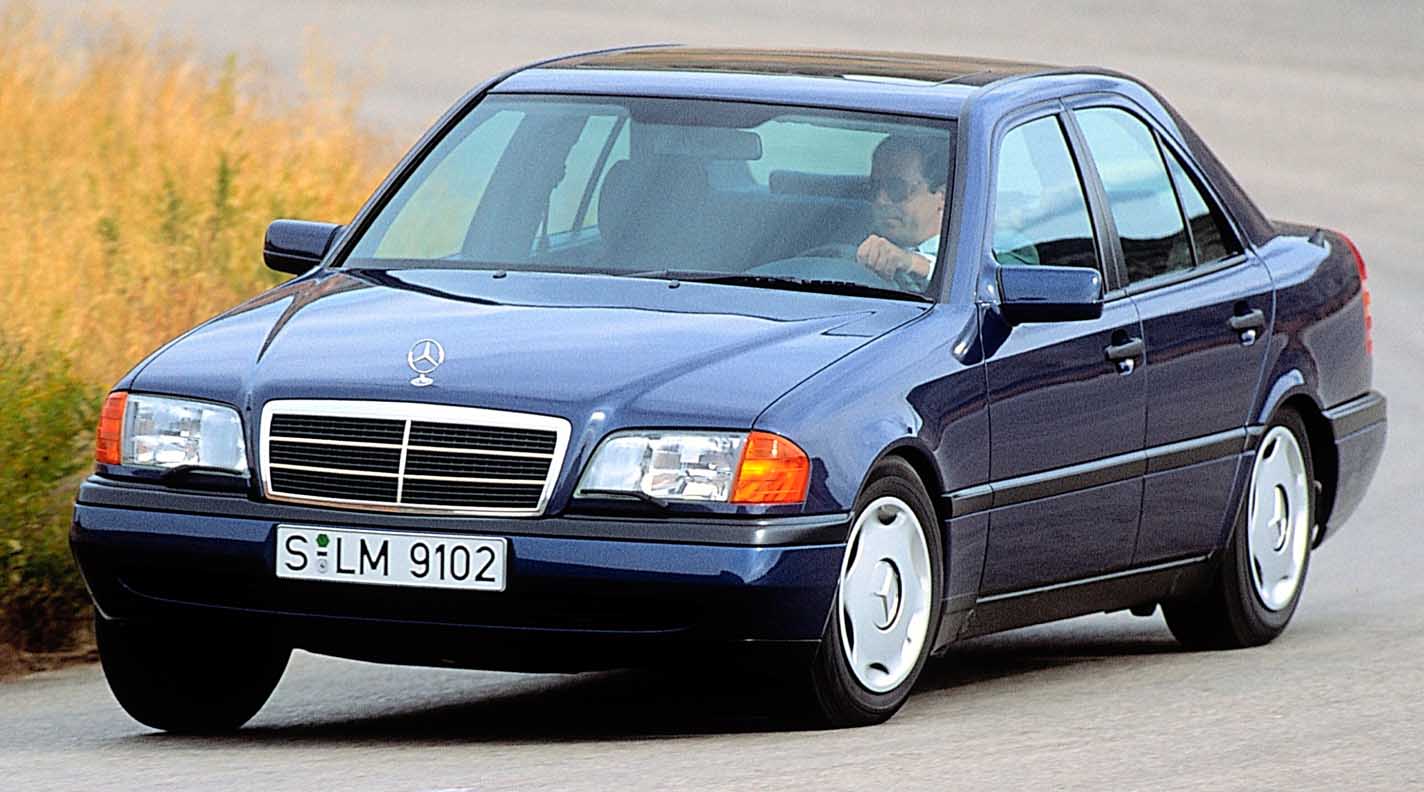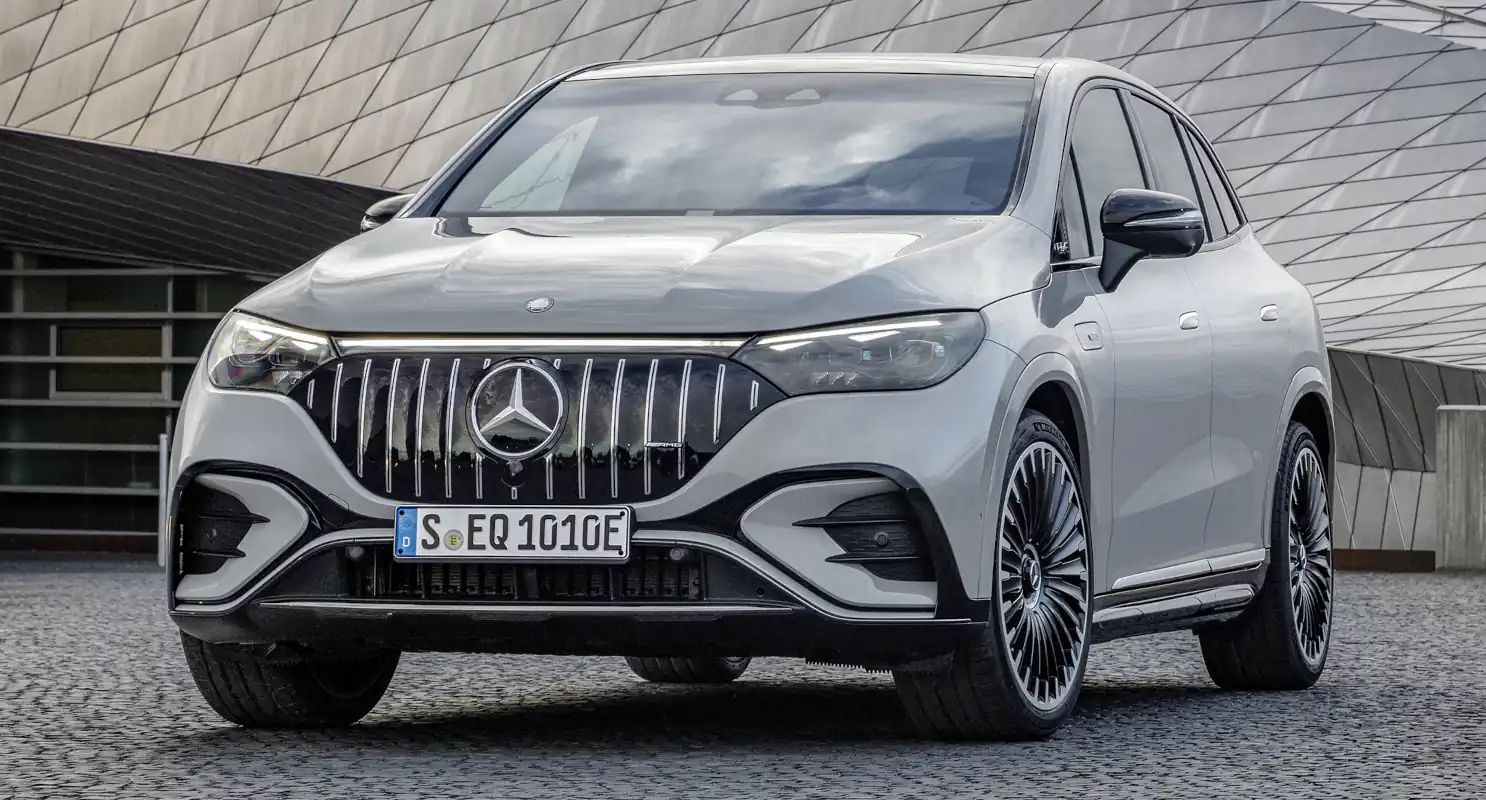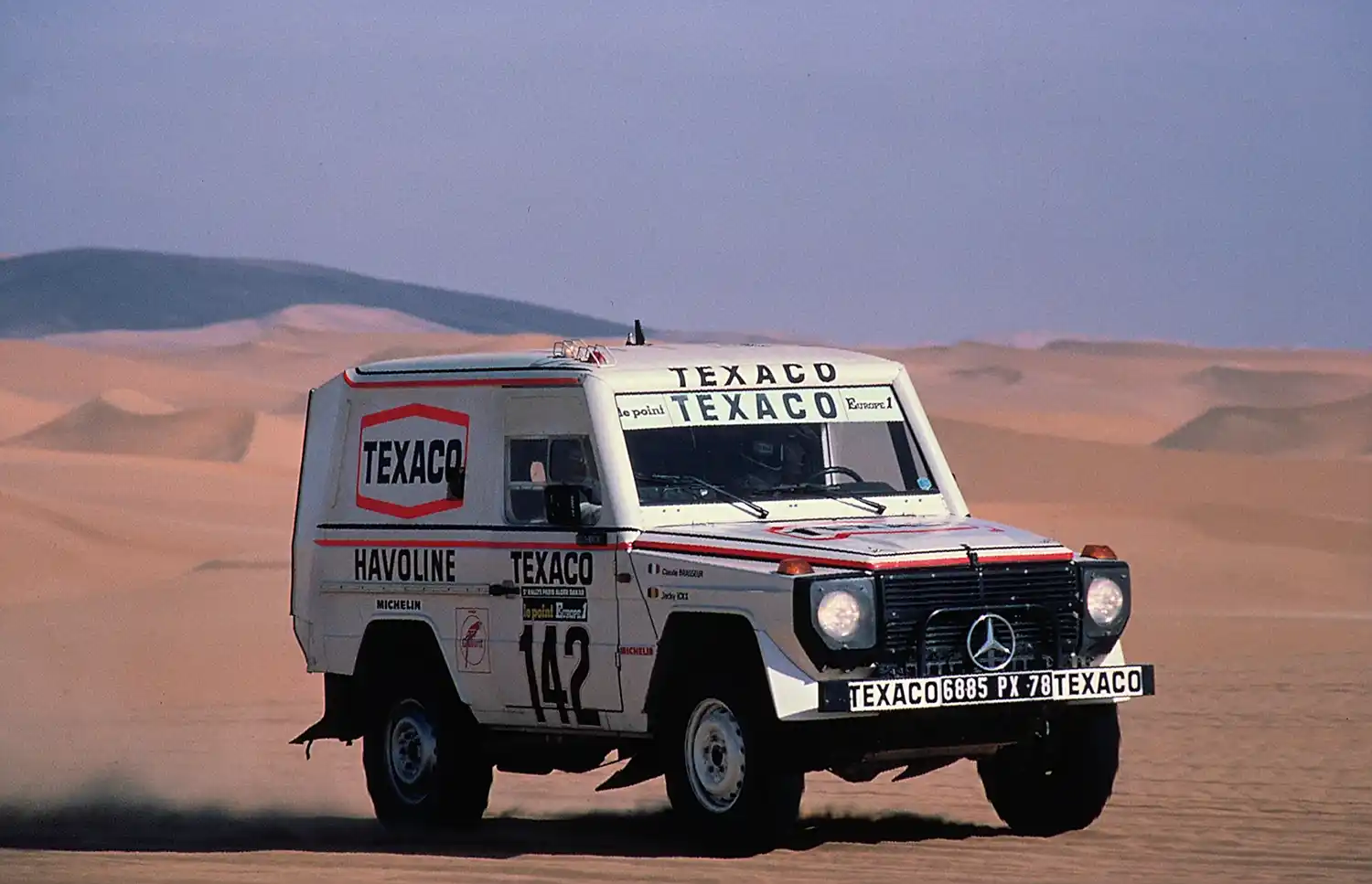
40 years ago, Mercedes-Benz triumphed in the world’s toughest rally: racing driver Jacky Ickx and his co-driver, actor Claude Brasseur, won the 1983 Paris–Dakar Rally with the
Mercedes-Benz 280 GE. The project was managed by Mercedes-Benz France. From Germany, engineers of the company assisted with the engine and aerodynamics of the off-road vehicle.
At that time, the Paris–Dakar Rally had great worldwide appeal. It was the fifth time it took place. Several hundred adventurers set off from the French metropolis to the capital of Senegal in 1978 for the first time. The start took place early in the morning of 1 January 1983 on the Place de la Concorde in Paris. After around 20 extremely demanding daily stages through deserts such as the Ténéré in the south of the Sahara and in the north of Niger, the heavily thinned out field of participants reached the city of Dakar on the Atlantic coast. The participants in the car, truck and motorbike classifications covered between 10,000 and 12,000 kilometres to reach the finish.
Since its early years, the “Paris–Dakar” has attracted renowned car manufacturers to compete in the African desert. Former car and motorbike racer Thierry Sabine founded and organised the spectacular adventure. In January 1986, he was killed in a helicopter crash. The event continues to this day; it is now called the “Dakar Rally” and currently takes place in the desert regions of Saudi Arabia. It was previously held in South America from 2009 to 2019.

The engine of the Mercedes-Benz 280 GE “Paris–Dakar”
Mercedes-Benz France led the preparation of the winning Mercedes-Benz 280 GE of the 460 model series. Customer service manager Gunter Latour maintained good contacts with Mercedes-Benz in Untertürkheim. Georg Berkmann, a graduate engineer whose main area of responsibility was the combustion processes of passenger car engines in commercial vehicles, was assigned to the project. For the tough rally use of the 280 GE, he reworked the twin-cam six-cylinder M 110 engine. As early as 1977, a Mercedes-Benz 280 E from the 123 model series won what was probably the longest rally in motorsport history with this sporty power unit: Andrew Cowan, Colin Malkin and Mike Broad took first place in the London–Sydney rally marathon after more than six weeks and around 30,000 kilometres.
Georg Berkmann chose the standard version of the M 110 with 136 kW (185 hp) as the basis. He wanted to tease out even more power for the Paris–Dakar Rally in 1982 and 1983. By comparison, the M 110 in the Mercedes-Benz 280 GE launched in 1979 developed 115 kW (156 hp). The engineer resorted to camshafts originally intended for the performance upgrade of the 280 SL (R 107). Thus, the “Paris–Dakar” engine achieved around 145 kW (197 hp). One of the unusual solutions was the hydraulic pump from the 123 model series estate for level control: in the motorsport G model, it was used to cool the manual transmission.
The main problems when operating in the deserts of the African continent are extreme temperatures, dust and poor fuel quality. First, Berkmann relocated the engine’s air intake to the interior. There, temperatures are usually lower and the dust content in the air is less. He chose a simple but effective remedy for the poor quality of the petrol. Four decades later, he recounts: “I put yellow and red markings on the ignition distributor. So drivers could quickly adjust the ignition timing if the engine knocked due to poor fuel quality.” To make this quick and avoid having to search for the right tool, the resourceful engineer attached a four-millimetre Allen key to a chain near the ignition distributor. Jacky Ickx was also thorough. In his preparation, he labelled each relay in order to quickly track down defects.
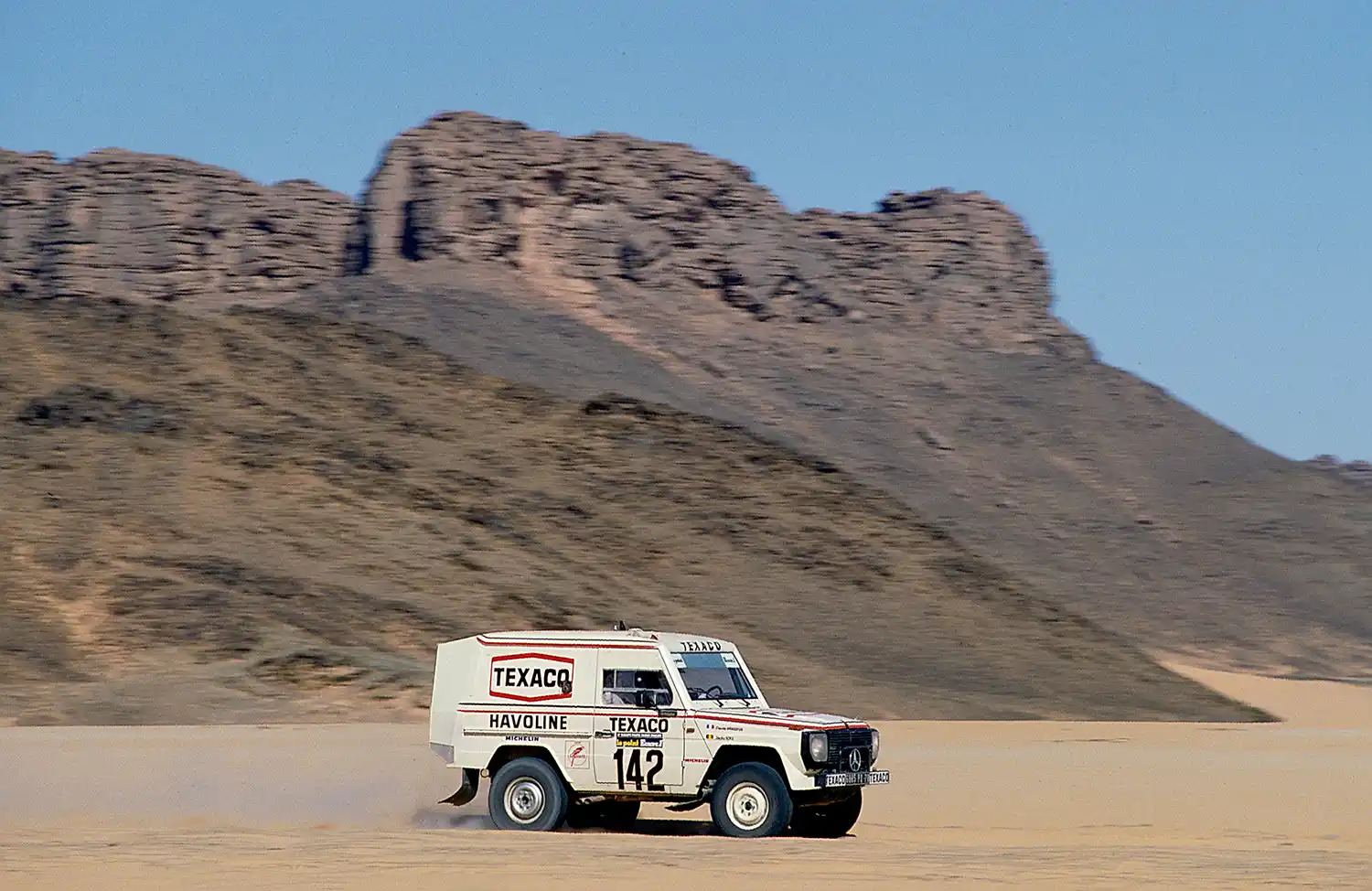
Aerodynamics optimised
With the upgraded engine, the 280 GE reached a top speed of 175 km/h. That was 25 km/h faster than the standard variant. After the previous year’s experience, however, Berkmann was sure that this pace would not be enough for the victory they were aiming for in 1983: in 1982, the
Mercedes-Benz 280 GEs finished third (Jean-Pierre Jaussaud/Michel Brière) and fifth (Jacky Ickx/Claude Brasseur) in the Paris–Dakar Rally. But radically increasing engine power was out of the question for reliability reasons. Berkmann turned to fellow engineer Rüdiger Faul, who had developed the aerodynamics of various racing sports cars and the C 111-IV. This record-breaking car reached more than 400 km/h during world record runs in Nardò in 1979.
To optimise the aerodynamics of the 280 GE, Faul took a pragmatic approach. “I got myself some 70-millimetre-diameter plastic sewage pipes in the construction department of the Sindelfingen plant,” he describes in retrospect. He attached pipe segments around the windscreen and in this way significantly optimised the flow pattern in this area. At the rear, Faul chose striking extensions of the roof and the rear side walls. Within the company, this significant change to the body line was given the name “little bus shelter”. The measures drastically optimised air resistance. Measurements in the Untertürkheim wind tunnel showed that the cd value drops from the original 0.52 to 0.41 – that is a reduction of 20.5 per cent. Georg Berkmann sums up: “Due to the aerodynamic changes, the top speed increased by a good 20 km/h to almost 200 km/h, while fuel consumption was five litres per 100 kilometres lower.”
Jacky Ickx and Claude Brasseur
Born in Brussels on 1 January 1945, Jacky Ickx was one of the best racing drivers from the late 1960s to the end of the 1980s. Between 1966 and 1979, he won eight Grands Prix in Formula One and was the runner-up in 1970. He won the 24 Hours of Le Mans six times between 1969 and 1982. In the Paris–Dakar Rally, in addition to his victory in 1983, the Belgian finished fifth with the
Mercedes-Benz 280 GE the previous year and second in 1986. “In 1982, we discovered the 280 GE. You can push it to the limit and trust its engineering without reservation – that’s an asset for the Paris–Dakar Rally,” explained Ickx in an interview shortly after his 1983 victory. In addition, he got on very well with his co-pilot Claude Brasseur. “We did not start out simply as colleagues, but as accomplices. That was certainly fundamental.” Brasseur, who died in 2020, was one of the most famous French movie and TV actors at the time.
The 1983 Paris–Dakar Rally
Mercedes-Benz France’s involvement in the Paris–Dakar Rally bore fruit with third and fifth places already in 1982. Among the first ten vehicles to cross the finish line were two more 280 GEs and a Mercedes-Benz prototype. In 1983, 193 cars, buggies and trucks as well as 111 motorbikes raced the 12,000 kilometres from France via Algeria, Niger, Burkina Faso, Ivory Coast, Mali and Mauritania to Senegal. The most important navigation aid was the compass. The most prominent starters of the field, Jacky Ickx and Claude Brasseur, took the lead early with the 280 GE. Before the stage finish in Agadez (Niger), Ickx noticed a severe loss of power in his engine. He received the engine of a teammate. The exchange of complete major assemblies with another vehicle in competition is permitted. After that, Ickx returned to his usual fast pace.
Many participants dropped out because of the exertions of this rally with 20 daily stages of 300 to 1,000 kilometres: technical equipment failed; accidents or crashes involving the motorcyclists decimated the field. Some gave up out of sheer exhaustion – or because after many hours of wandering through the desert they no longer reached the stage finish in time. Only 61 cars and trucks and 28 motorbikes made it to the finish line. Ickx and Brasseur were the exhausted but celebrated winners on the Dakar beach. Further Mercedes-Benz G models finished in fifth, sixth and eighth place. The brand even celebrated a double victory: Georges Groine, Thierry de Saulieu and Bernard Malfériol reached Dakar as the best truck with a Mercedes-Benz 1936 AK all-wheel drive truck (261 kW/355 hp).
